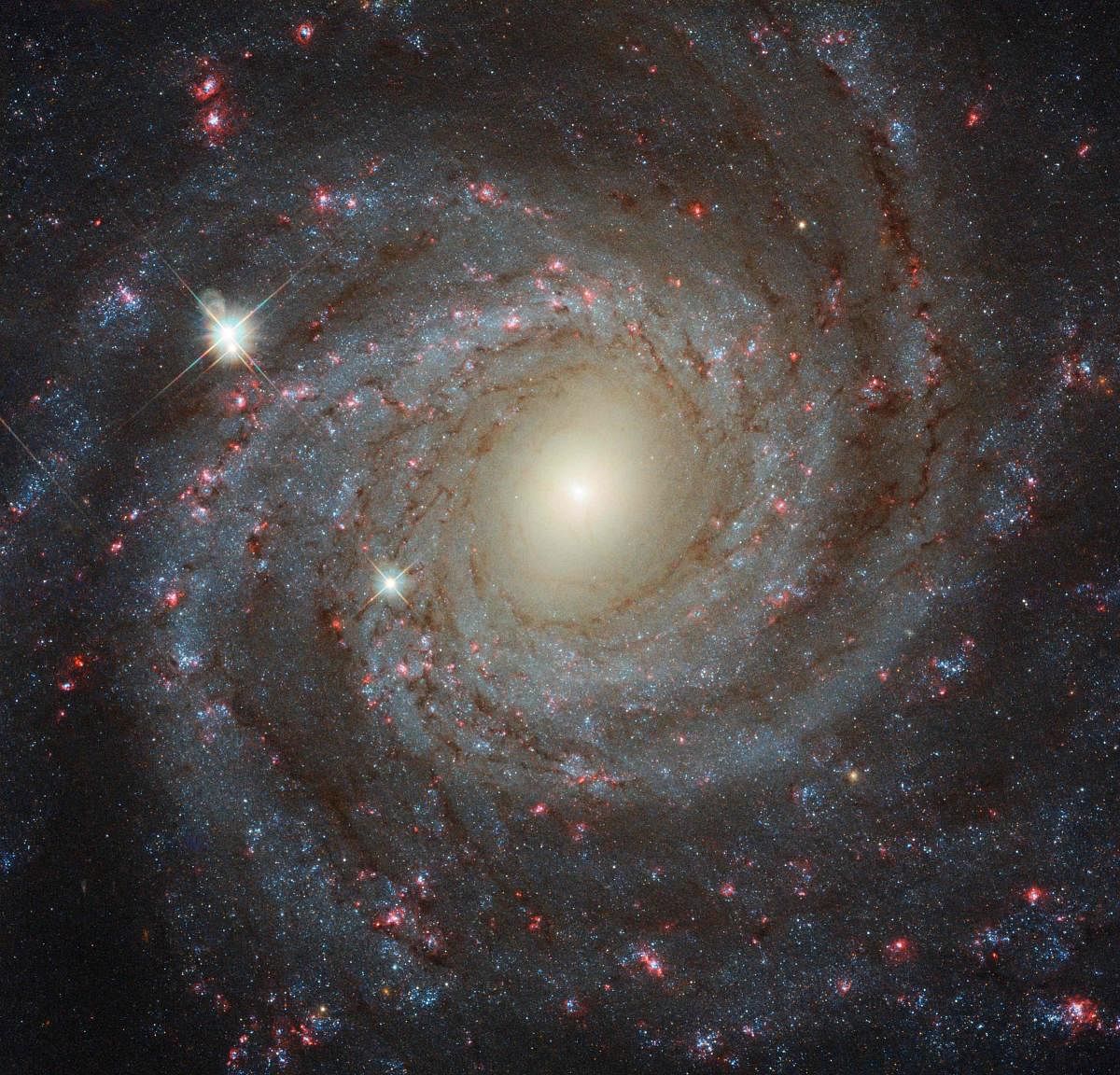
The evolution of the world can be compared to a display of fireworks that has just ended, some few red wisps, ashes, and smoke. Standing on a cooled cinder, we see the slow fading of the suns, and we try to recall the vanished brilliance of the origin of the worlds.
– Georges Lemaitre
Hubble is a very well-known name. Some associate its popularity with the space telescope which can be seen at dawn or dusk as a slow-moving dot in the sky. Physicists know the law associated with the name as the proof of an expanding universe, establishing the big bang theory. In fact, the relationship established by Edwin Hubble relating distance and recession velocity has its slope named as the Hubble Constant.
The International Astronomical Union recently passed a resolution to recommend renaming the Hubble’s Law as the Hubble–Lemaître law, which has now been accepted. The law describes the recession of galaxies with a velocity proportionally related to their distance.
The resolution of renaming the Hubble law was presented and discussed at the XXXth General Assembly of the IAU, held in Vienna (Austria) in August 2018. The proposed resolution has been accepted with 78% of the votes in favour. Now the questions — Who was Lemaître? Why was the amendment not done 90 years ago?
This requires a little background of the way our understanding of cosmology has evolved. The question on the origin of the universe is, perhaps, as ancient as humankind itself. However, a crawl out of mythological ideas began by the late 19th century as the laws of nature started unfolding. The precise turning point can be linked to the General Theory of Relativity proposed by Albert Einstein in 1916.
The force of gravity was redefined as the creator of the space-time fabric. With this new idea, attempts were made for modelling the universe. The introduction of matter, in other words gravity, would force the universe to shrink since space-time itself would contract. To disable this, a constant was introduced into the equations to achieve equilibrium and keep the universe ‘static’.
Lemaître’s paper
At this juncture, a paper was published in Annals de la Société Scientifique de Bruxelles in French, a journal not very widely read and a language not understood by all. The author, Fr Lemaître, however, was well-known to the scientific community as a mathematician and astronomer; he was also a Catholic priest.
While it is interesting to see that Lemaître had used the results of Hubble’s earlier paper, he even interpreted it in terms of the expansion of space-time as per the General Theory of Relativity. Lemaître built the expanding universe using the same equations of Einstein but had to face criticism. He further extended the idea to a ‘single point’ origin of the universe, a cosmic egg. This idea also was criticised by Fred Hoyle as the “Big Bang” and the word has come to stay forever.
Essentially, the result obtained by Lemaître is the same as Hubble’s Law — the farther the galaxy, the faster it moves away from us! In it, he actually provided the first estimate of what we now call Hubble’s constant, which measures the rate of expansion, based on (rather limited) observations of galaxies then available.
This paper was discussed by Arthur Eddington in the Royal Society and as a result, in 1931, Lemaître himself translated the paper into English for the journal Monthly Notices of the Royal Astronomical Society. This version did not contain the deductions leading to the (Hubble’s) law and the credit of discovery was duly given to Hubble, who had done extensive observations and published a paper in 1927.
Humason joined him to provide more data with better resolution spectra of a large number of galaxies establishing the Hubble constant which relates the distance–velocity relationship. Hubble used the independent measure of distances using the period luminosity relation of the Cepheids established by Henreitta Leavitt; he also used the results of Vesto Slipher, based on accurate measures of red shifts.
Since Lemaître had already published the law prior to Hubble, it led to many unpleasant remarks among astronomers. Almost 80 years later, astrophysicist Mario Livio published the results of his elaborate research on the work of Lemaître to call it a day for any conspiracy theory involving the editors of Monthly Notices of the Royal Astronomical Society, and Hubble. Livio found that Lemaître himself had omitted this part in the English translation.
Lemaître wrote to the editors of the journal: “I did not find advisable to reprint the provisional discussion of radial velocities which is clearly of no actual interest, and also the geometrical note, which could be replaced by a small bibliography of ancient and new papers on the subject.” Livio concludes that “Lemaître was not at all obsessed with establishing priority for his original discovery. Given that Hubble’s results were already published, he saw no point in repeating his more tentative earlier findings again 1931.”
As a result of these findings, many started feeling that Lemaître’s name must be included. Thus, at the 30th General Assembly, the resolution of renaming was proposed. The argument that “the whole exercise is going to open up a Pandora’s box” was put down with “If we made a mistake in the past, then should we not do our best to rectify it? If changing the name of Hubble’s law leads to future calls to change the names of laws, then we need to deal with them as best we can when they come.”
However, there are laws without the names attached; the laws of relativity, for example. The naming of scientific laws has historical value. It honours the scientist who summarised and generalised a very complex concept. So, what is in a name? History, honour and recognition of scientific thinking and much more.
(The writer is visiting scientist, Jawaharlal Nehru Planetarium, Bengaluru)